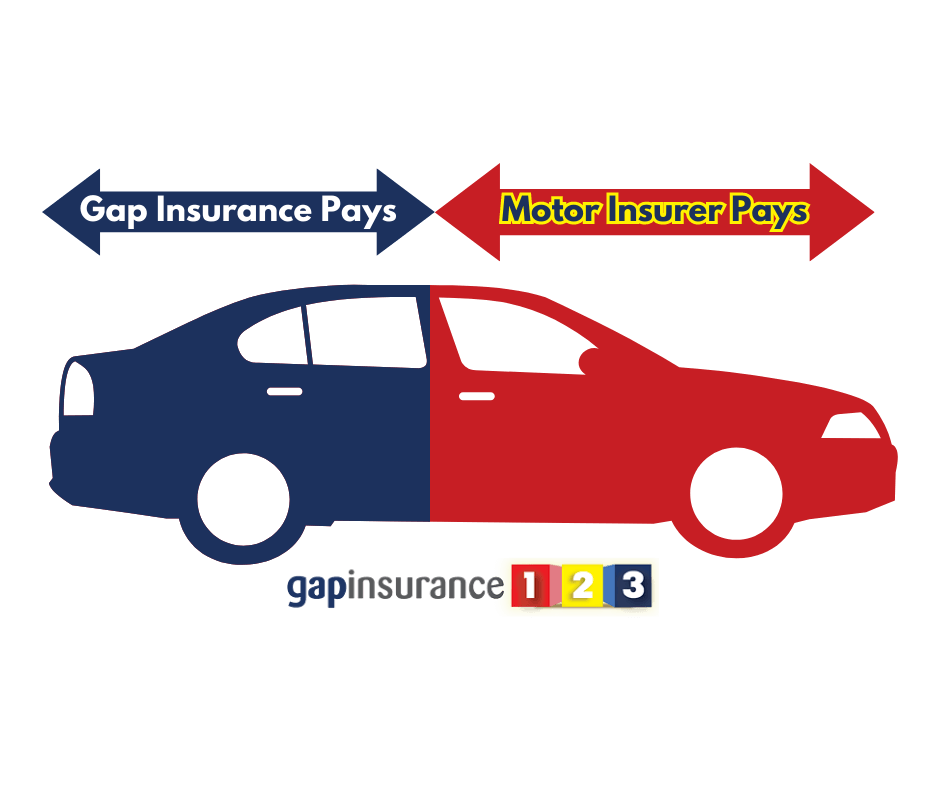Customer Service Lines Christmas Eve 10am-1pm
Please select some policies.



Need Help? Calling from a mobile please call 0151 647 7556
0800 195 4926Do you have a question? or need help?
Customer Service Lines Christmas Eve 10am-1pm, Closed 25th, 26th, 27th & 28th
GAP Insurance, or Guaranteed Asset Protection insurance, is a topic many car owners may question.
Understanding how GAP Insurance works helps you decide whether or not it is for you. 
So let's start by addressing the question that is the title of this article.
It depends on several things.
Guaranteed Asset Protection (GAP) insurance is a specialised type of insurance designed to cover the difference between the market value settlement from your fully comprehensive car insurance provider, should they write off the car as a total loss, and depending on which type of GAP Insurance you have:
To answer the question, we will look at each type of GAP product and provide an individual answer for each.
Before we begin, we should point out that any GAP claim must be made following your main motor insurer writing off the vehicle and paying our the then market value as a car insurance payout.
GAP protection is not a substitute for fully comprehensive car insurance. All forms top up the car insurance settlement.
Finance GAP Insurance is designed to cover the difference between your outstanding finance agreement and the car insurer's market value settlement of your car.
It helps ensure that you don't owe more to the finance company than your standard car insurance provider pays out.
Does Finance GAP cover the full value of the car? - No
It only covers any shortfall between the comprehensive car insurance policy settlement and the outstanding finance settlement.
Return to Invoice GAP Insurance, also known as Back to Invoice, RTI GAP insurance or Retail Price Protection, covers the difference between the insurance payout and the original invoice price of your car.
It aims to settle your finance outstanding and return the balance up to the invoice price you originally paid to you. 
Does Return to Invoice GAP cover the full value of the car? - Yes
Since 'full value' means the price you first paid for the car, this is covered.
Vehicle Replacement GAP Insurance covers the cost of a brand-new replacement car if your vehicle is written off or stolen.
It pays the difference between the insurance payout, and the cost of an equivalent replacement car of the same make, model, specification, age and mileage as yours was when you bought it.
So if yours was a brand new car when you bought it, then the equivalent is a brand new replacement when you claim. If your car were one year old with 10,000 miles when you purchased it, then it would be the cost of a one year old, 10,000 example of that car when you make a claim.
Does Vehicle Replacement GAP cover the full value of the car? - Yes
Because 'full value' means the amount you need to replace the vehicle with the equivalent one you first started with, even if this price has increased.
Lease GAP Insurance, also known as Contract Hire GAP Insurance, is designed for individuals who have leased a car.
It covers the difference between the insurance payout and the amount required to settle the lease agreement, ensuring you don't continue to owe money on a car you no longer have.
Does Lease GAP cover the full value of the car? - No
Lease GAP helps you cover any shortfall on the lease settlement if the vehicle is written off. With a lease, you do not have the option to buy the car, so Lease GAP will not cover the full value in any case.
Negative Equity GAP Insurance covers the difference between the insurance payout and any outstanding finance settlement, including any negative equity from a previous car that was rolled into the new finance agreement.
This type of GAP insurance is specifically designed if you have negative equity from a previous vehicle purchase.
Does Negative Equity GAP Insurance cover the full value of the car? - No
Negative Equity GAP only covers a finance shortfall on your credit agreement. It will not provide anything more towards the vehicle value.
Agreed Value GAP (aka Return to Value) is designed to cover you between the motor insurers' current market value settlement following your car being stolen or written off and the vehicle's value on the day you bought the policy.
A valuation service like Glass Guide generally defines the' agreed value'. Agreed Value GAP is ideal for private or auction purchases where the vehicle has not been bought from a VAT-registered motor dealer.
Does Agreed Value GAP cover the full value of the car? - Yes
If the full value is the agreed value at the start of the GAP policy, then this type of GAP cover can cover back to that full value. 
What is the 'full value' of your car?
When customers as, 'Will it cover the full value of the car', then it is clear they may have a different idea of what they mean by 'full value'.
GAP insurance is designed to provide financial protection when your car is written off or stolen, and the payout from your standard car insurance provider doesn't cover the value of your vehicle or the outstanding finance.
When you file a GAP insurance claim, the policy covers the difference between the insurance company's payout and one of the following, depending on which one of the GAP insurance policies you purchased:
By deciding which type of coverage you need, you can decide if GAP Insurance is worth having. You can then get a GAP Insurance quote for the appropriate cover.
GAP Insurance provides financial assistance if your motor insurance company write off the vehicle after it has been stolen, in an accident, set on fire or suffered a flood.
Your GAP cover will top up the market value settlement from your car insurance company.
As detailed above, how much the GAP policy will top up your settlement depends on which type of GAP Insurance you have taken.
However, which type of GAP protection you take or is available to you will dictate whether it will cover the full value of your car.
Like all insurance products, GAP cover has terms, conditions and exclusions. Some of which can result in you not getting the protection you may expect.
They can also mean that even when you think the vehicle's total value is covered, you may find some or all of your claim reduced.
This is really your choice. GAP protection is not compulsory insurance, like car insurance. No one can force you into taking GAP cover out.
Determining whether you need GAP insurance depends on several factors. Consider the following when deciding if GAP insurance is right for you:

The cost of GAP insurance can vary depending on several factors, such as the value of your car, the length of your policy, and the provider you choose.
Here are some tips for finding cheaper GAP insurance:
You can purchase GAP insurance from a car dealership or an independent provider. Each option has its pros and cons:
Pros: Convenient, as you can purchase GAP insurance at the same time as your vehicle
Cons: Prices can be higher, and coverage options may be more limited
Pros: Potentially lower prices and more coverage options
Cons: Requires additional research and may not be as convenient as purchasing from a dealership
When buying GAP insurance, ensure you fully understand the policy's terms and conditions, including coverage, claim process, and exclusions. Always read the fine print and ask questions if anything needs clarification.
GAP insurance can be a valuable financial safety net for car owners, particularly those with new vehicles or significant outstanding finance. However, as we have seen, not all GAP products can cover the car's full value.
Understanding the coverage, types, costs, and exclusions associated with GAP insurance is essential to decide whether this type of insurance is right for you.
Considering the information in this article and conducting your research, you can confidently decide if GAP insurance is a wise investment to protect your financial interests.
Published 4/5/2023, written by Mark Griffiths